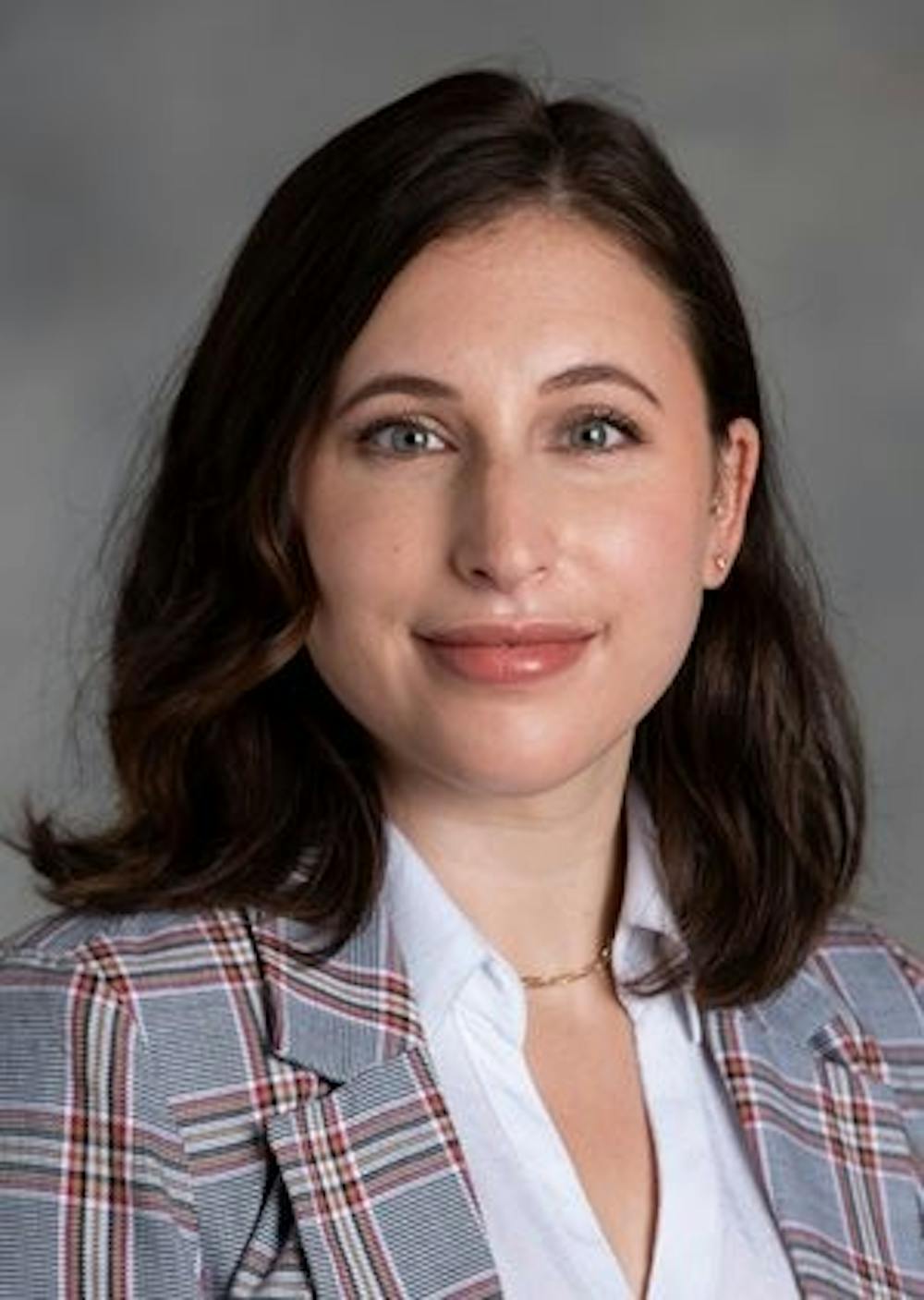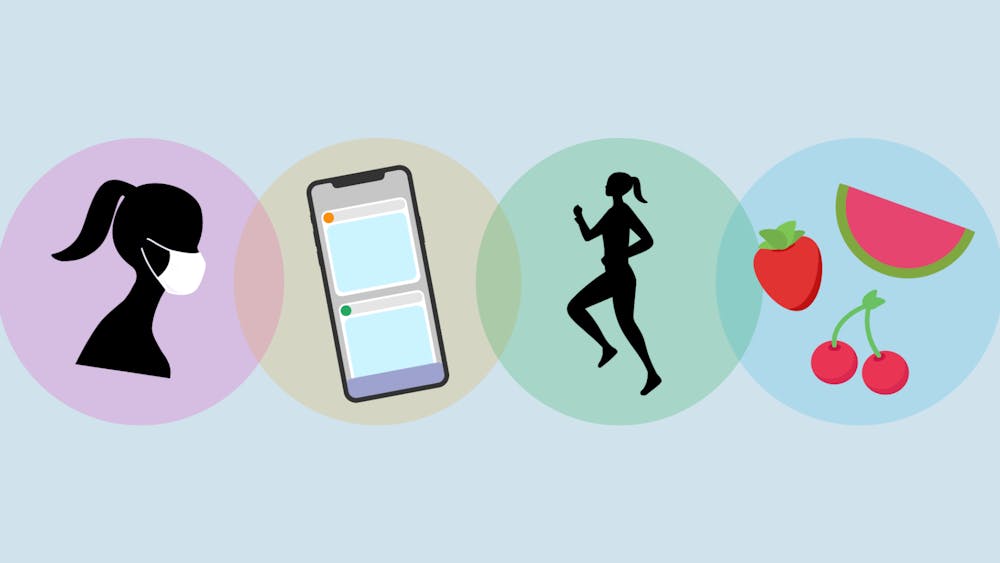The COVID-19 pandemic caused an increased use in social media, which is linked to an increased amount of diagnosed eating disorders. In 2020, there was a 15% increase in diagnosis of eating disorders, according to the British Journal of Psychiatry, with links to the COVID-19 pandemic. Emergency department visits for girls with eating disorders in the U.S. doubled during the pandemic, according to a study from the Centers for Disease Control and Prevention.
According to the National Eating Disorder Association, in 2015 95% of girls say they have seen an onslaught of negative appearance critiques on social media, including comments, photos and videos — with 72% seeing them at least once a week. Of people diagnosed with eating disorders, 95% are between the ages of 15 and 25, according to Johns Hopkins All Children’s Hospital.

Professor of psychology Ilyssa Salomon discusses her research on the prevalence of eating disorders and the proposed reason behind them. Salomon’s expertise is developmental psychology, adolescence, social media use, body image and sexual harassment. She primarily studies the effects social media has on social and emotional development and is not a clinical psychologist.
This interview has been edited for clarity.
Do you typically see an increase in eating disorders in teenagers, more specifically college students?
“I’ve seen some mixed findings from research investigating the prevalence of eating disorders. Some have shown that diagnoses in adolescent populations haven’t necessarily increased for certain eating disorders. Some in college populations or older adolescents have shown that they are.
I think I’ve seen some research more recently looking specifically at during the pandemic, and there was an uptick in the amount of people seeking treatment, but there are also a number of reasons people may not be seeking treatment for eating disorders.
There’s also a number of people who may be suffering but still not meeting the threshold for a diagnosis with an eating disorder. I think we always have to take those prevalence statistics with a grain of salt, knowing that we get those by who is seeking treatment and people who are receiving official diagnoses.”
What are some outside factors that can contribute to an eating disorder?
“I think at least in the realm that I usually examine in my own research, I look at the impact of media, particularly social media. So theoretically, I use socio-cultural theory of body image as a lens through which I approach research, and it definitely suggest that media can play a role in setting societal body standards, and when those body standards are very unattainable and hard for a lot of people to reach, that can lead to negative body image which for some people can escalate into eating disorder symptomology or put them at risk.
During the pandemic, we’ve seen that people are using a lot of social media. … I think social media use, particularly if you are exposed to a lot of content that reinforces the importance of physical appearance, a very particular standard of physical appearance, may increase your risk of experiencing some of those symptoms and of developing negative body image.
There are also individual differences in who is susceptible to these messages, who is internalizing these messages. Some of us internalize those body standards more than others, so there are a number of factors that can place individuals at a greater risk. I just tend to focus on my own work, social media use and some individual characteristics.
So far, I’ve found in my work in young adolescents and older adolescents that girls are usually at a greater risk of experiencing that relationship between social media use and negative outcomes for body image and individuals who are higher in a variable called self-monitoring, which is essentially susceptibility to peer pressure, or how much are you paying attention to those around you. How aware are you of these social norms? And how willing are you to modify your own behavior to sort of meet those norms?"
What social media have you found contributes to this?
“In my previous work, I actually created a variable called objectifying social media use and looked not at specific platforms, but rather, behaviors that people were doing on those platforms. So where are you posting photos? Where are you posting photos and asking people to rate them? That was something that was kind of common at that time on Instagram.
More recently, on a paper I’m looking at, I’m finding that TikTok and Instagram are two that I find these negative associations pop up. Given the visual nature of these platforms, that’s understandable.
If we’re thinking that mechanism is the imagery that they’re seeing, the videos that they’re seeing are reinforcing those cultural body standards. They’re reinforcing the ability for you to change your body in extreme ways through behavior, like dieting behavior, like exercising. I think TikTok and Instagram are two that I focus on quite a bit.”
What resources do students who may be suffering with an eating disorder have?
“I know on campus we have our counseling services, so that would be a great place to start to speak with someone and make an appointment if you are suffering, and there’s also online resources. I know the National Eating Disorder Association has a hotline that you can call, … it’s listed online if you want to speak with someone. Certainly I think taking advantage of the counseling services on campus would be a great start.”
Is there anything else you would like to add about the study of eating disorders today?
“I promote intentional use: becoming aware of what social media and how it makes you feel when you use it, because I think we’re kind of hard pressed to say, ‘All adolescents or young people should stop using social media.’
It’s become such a large part of many people’s lives, how they stay connected with one another that it’s similar to abstinence-only approaches, it’s not always the best to just tell young people to stay off of social media. So usually, I like to promote a more intentional use, being aware of how social media makes you feel and potentially taking breaks if you’d like, or being more careful with how you curate the content that you’re consuming.”


